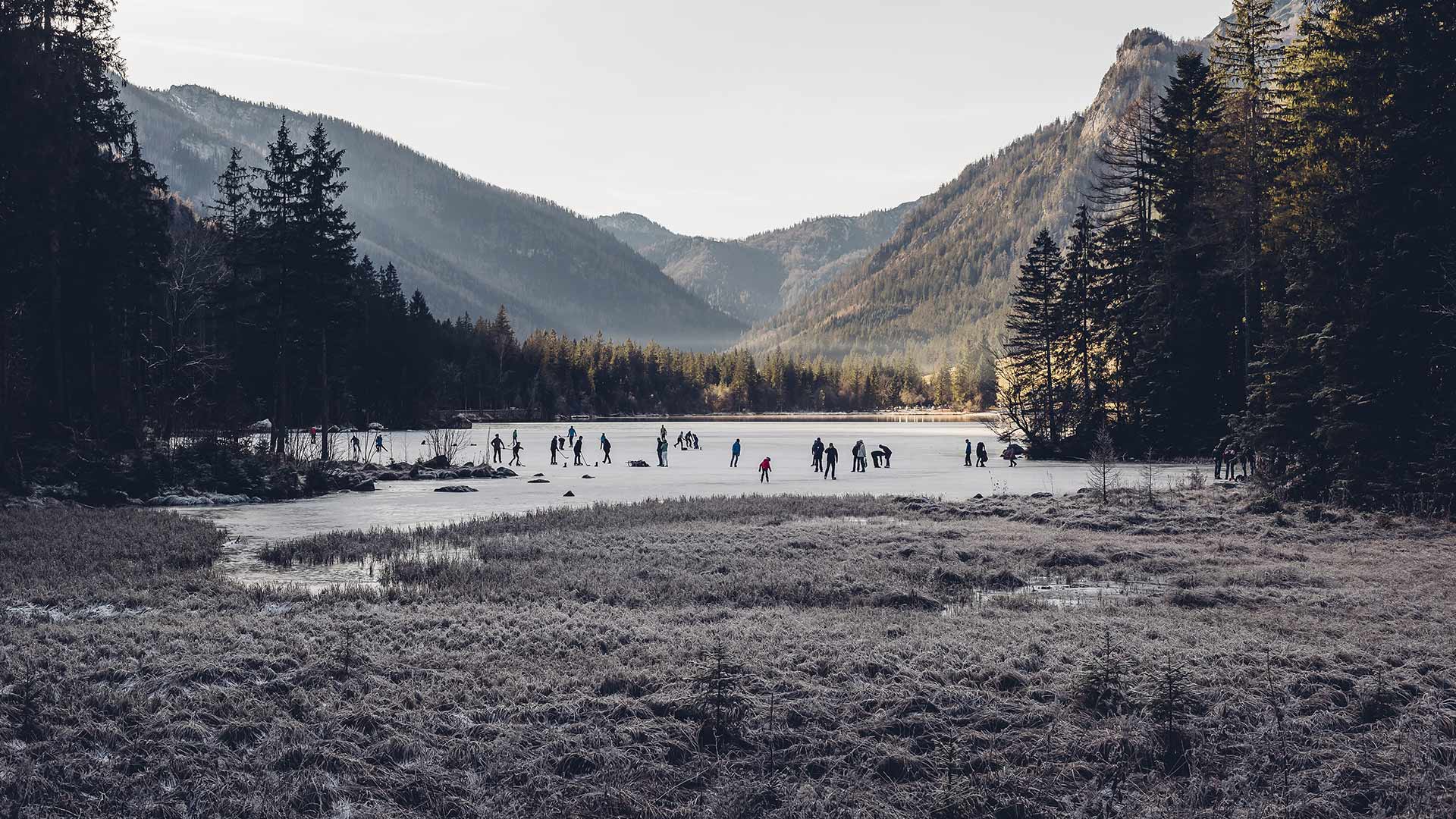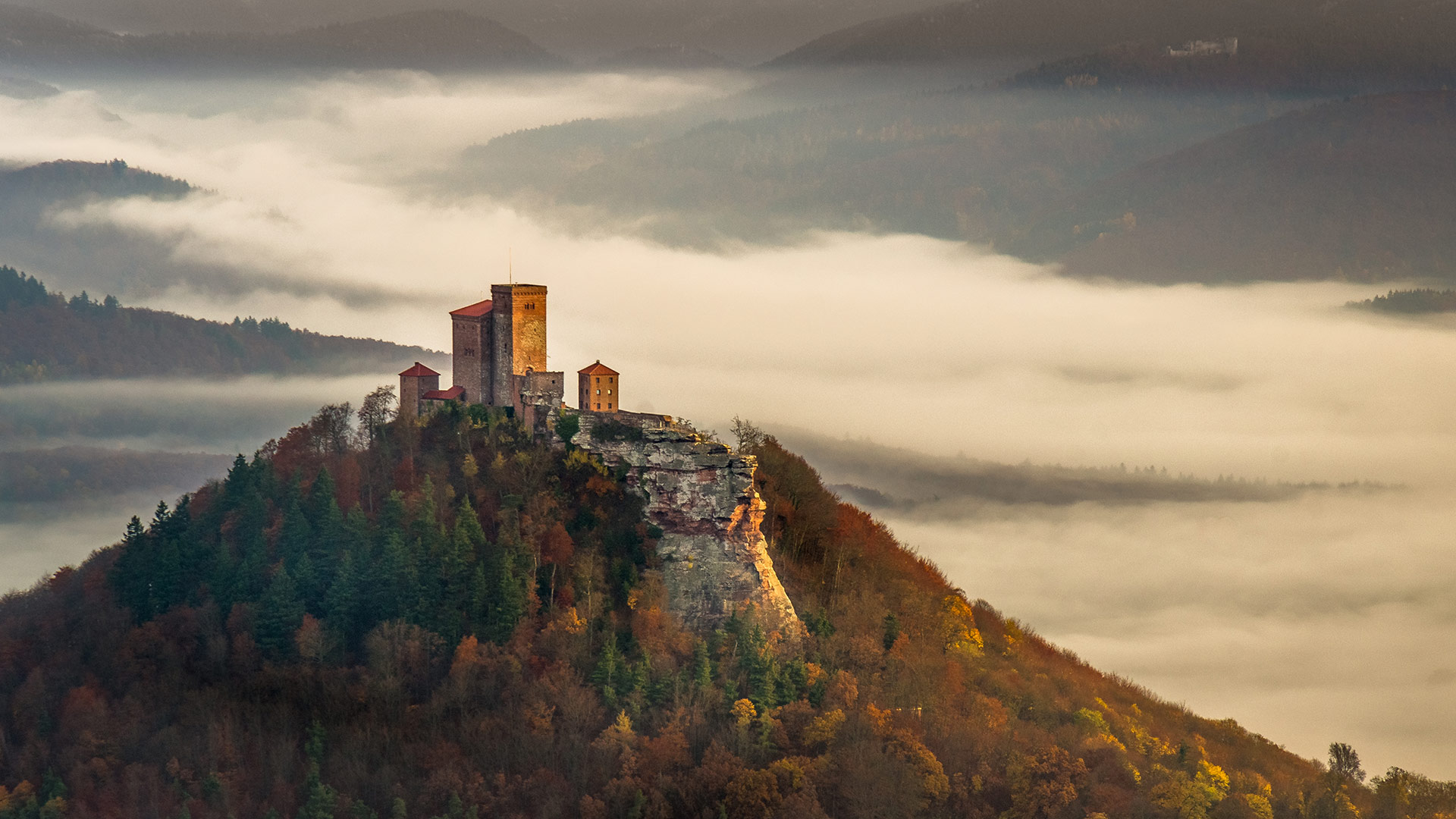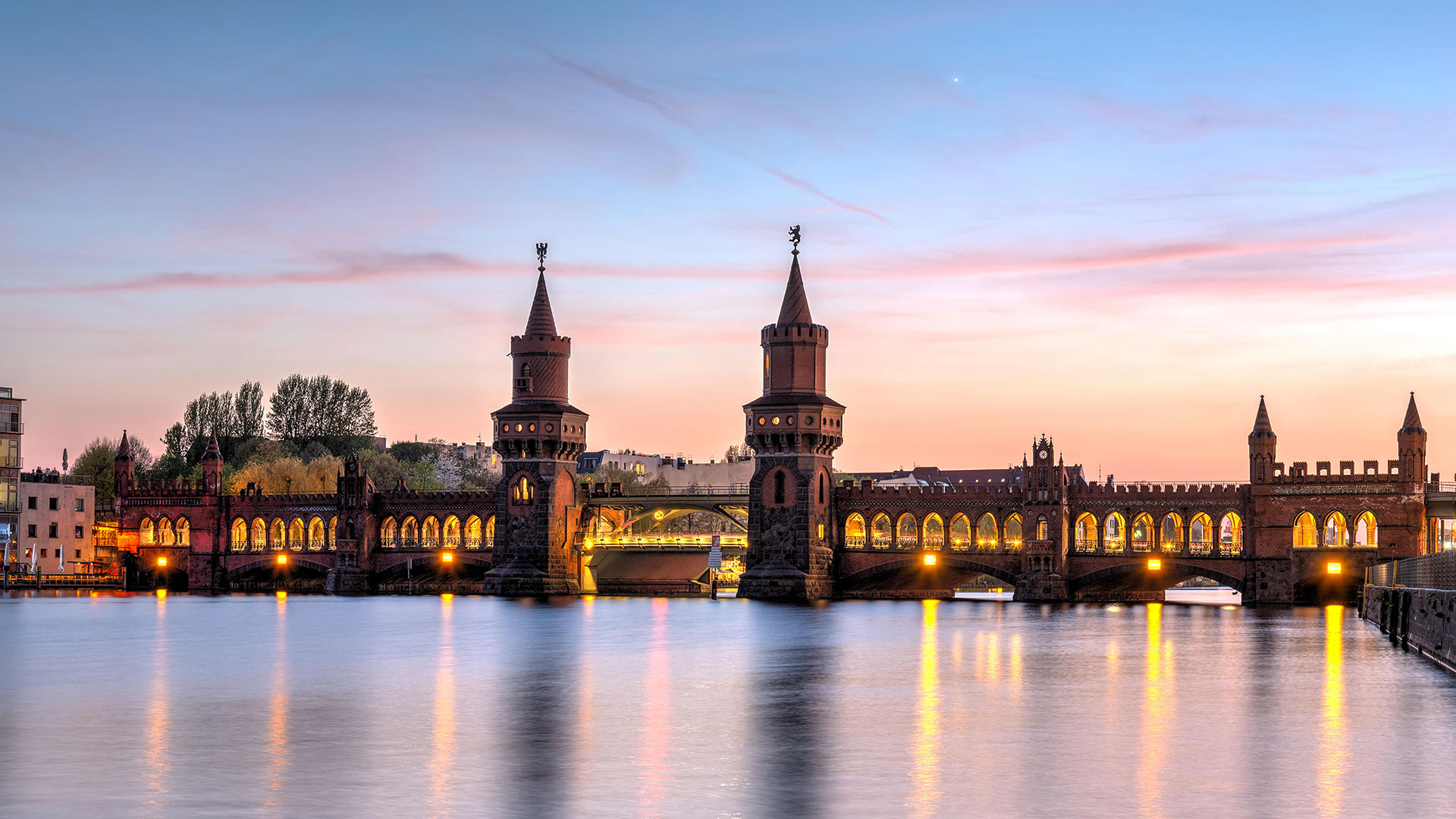标签 德国 下的文章
巴克南的跨年烟火,德国 Fireworks for New Year's Eve in Backnang, Germany (© Lilly/Alamy)
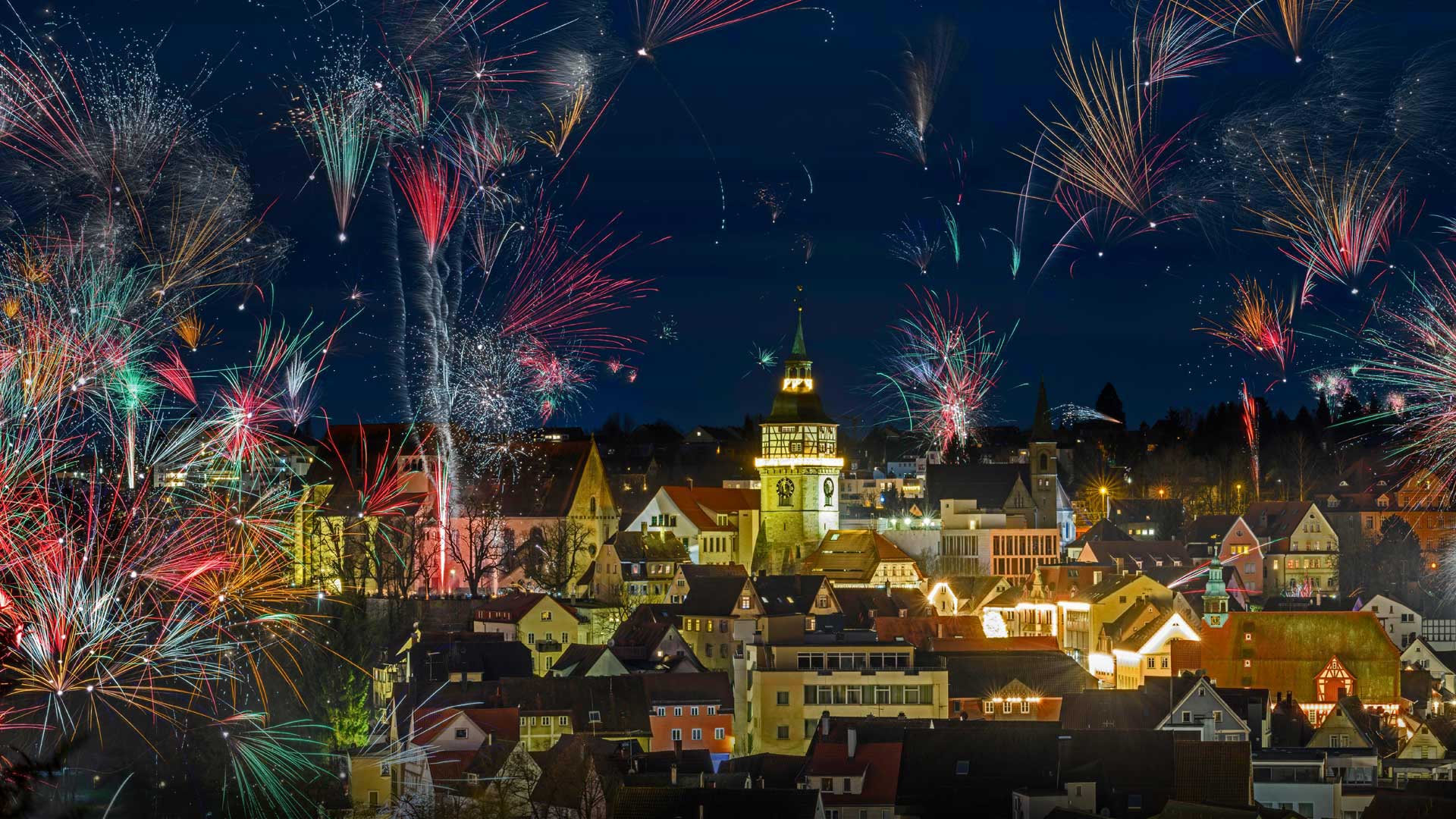
巴克南的跨年烟火,德国 Fireworks for New Year's Eve in Backnang, Germany (© Lilly/Alamy)
3, 2, 1 … Happy New Year!
Backnang, the city celebrating the new year in this photo, is in Germany's Baden region. Thanks to the Rhine River on the west, and the Black Forest to the east, the soil in Baden is ideal for vineyards. Among the varieties of wine produced here, Spätburgunder is common, which you may know by its more common French name: Pinot Noir. It seems likely that the people of Backnang would be celebrating with a glass of Pinot or something else this evening. However you choose to celebrate, here's wishing you a very happy and healthy new year!
贝希特斯加登县拉姆绍小镇上结冰的Hintersee湖和滑冰者,德国巴伐利亚 (© Jana Mänz/Westend61/Offset)
一年一度的施瓦本哈尔圣诞市集,德国巴登-符腾堡州 Annual Schwäbisch Hall Weihnachtsmarkt in the market square, Baden-Württemberg, Germany (© sack/Getty Images Plus)
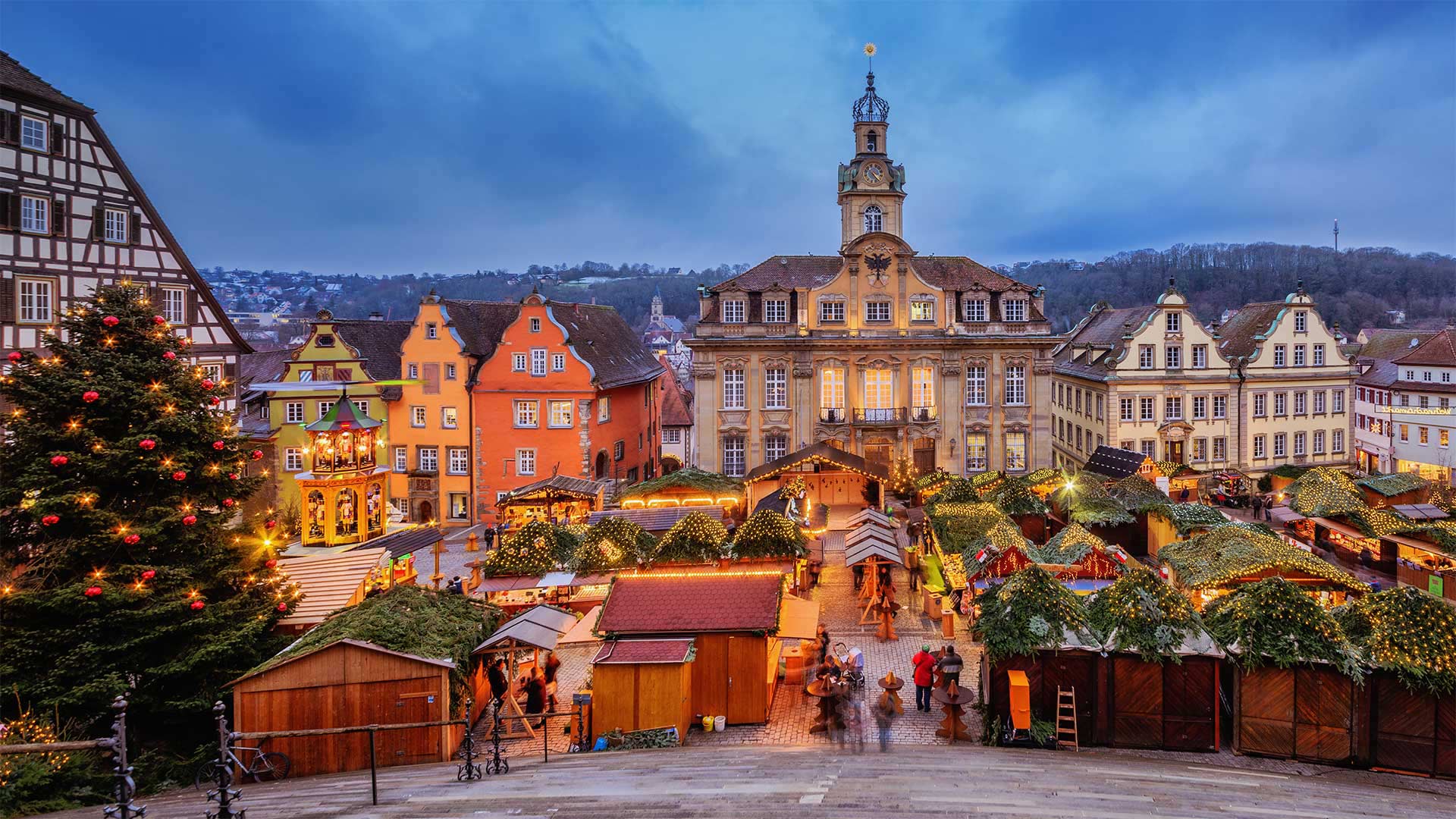
一年一度的施瓦本哈尔圣诞市集,德国巴登-符腾堡州 Annual Schwäbisch Hall Weihnachtsmarkt in the market square, Baden-Württemberg, Germany (© sack/Getty Images Plus)
It's Weihnachtsmarkt time!
The streets of this market square are all decked out in a tradition born nearly 700 years ago. Weihnachtsmarkts or Christkindlmarkts (Christmas markets, if you prefer less of a mouthful), take place around the world, but they originated in Germany as a celebratory way to observe Advent, the Christian season leading up to Christmas Eve. These markets are generally open-air affairs where everything is decorated, including the trees (called Tannenbaums in German if they're firs). People shop from local artisans who sell their handmade wares in small wooden chalets. Then it's off to eat traditional foods—roasted almonds, pastries, and biscuits—and sip on warm mulled wine. Today we're walking through Schwäbisch Hall, a German town that came into prominence during medieval times for its salt production, or 'white gold.' After holiday revelers tire of shopping and dancing in the streets, they can ease into one of the town's many healing spas to end the day.
大雾笼罩下的巴伐利亚阿尔卑斯山脉,德国 Fog shrouds the Bavarian Alps in Germany (© Anton Petrus/Getty Images)
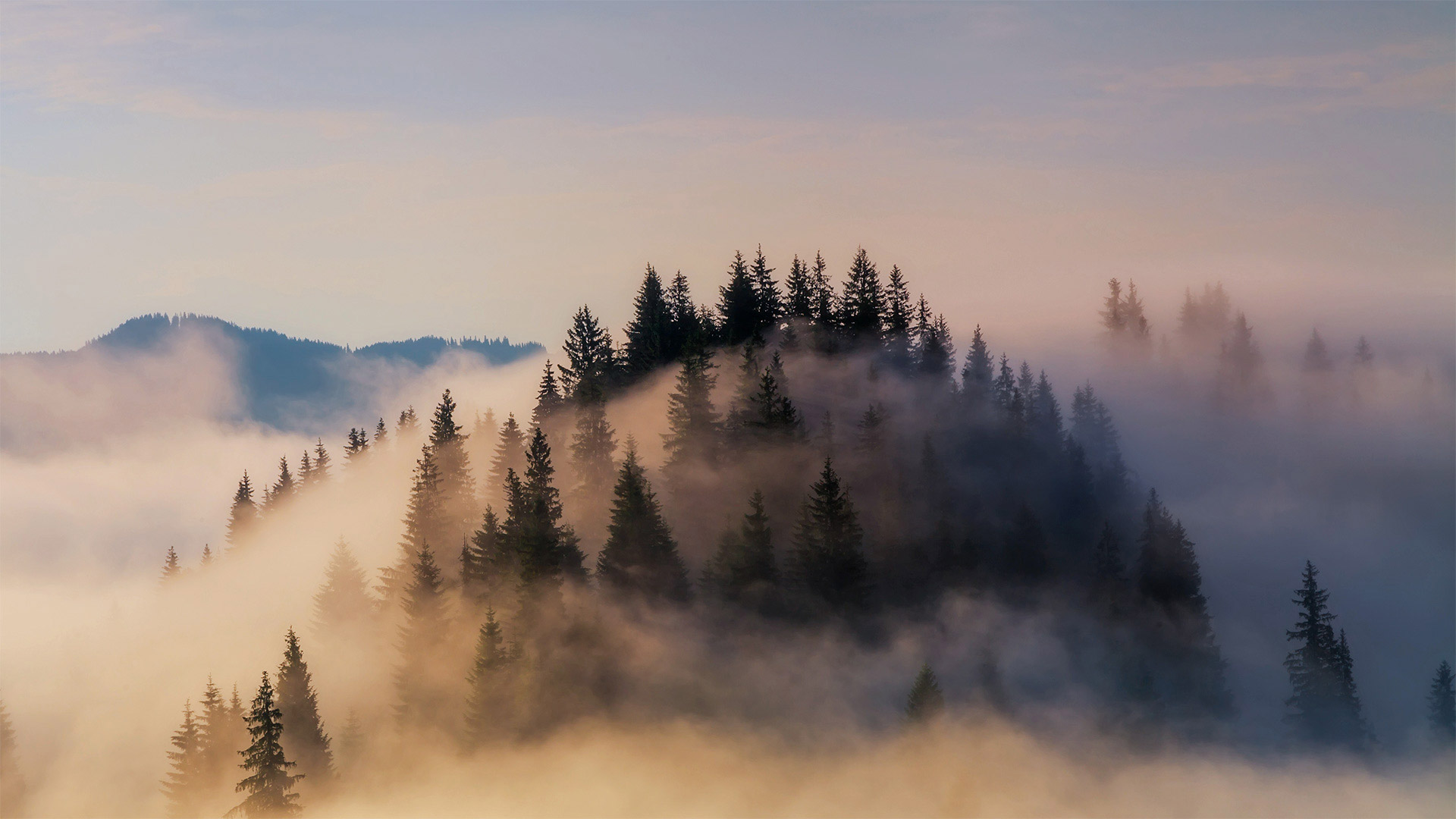
大雾笼罩下的巴伐利亚阿尔卑斯山脉,德国 Fog shrouds the Bavarian Alps in Germany (© Anton Petrus/Getty Images)
Mountain mists over Bavaria
If the forecast in Bavaria calls for 'nebel'—you'll know that means fog. In modern German, the word for 'November' is 'November.' But an older German term for this month was 'Nebel-mond' which translates to English as 'fog month'—it's the time of the year when fog is most likely to roll in. In some parts of the world the topography and local climate make fog a regular feature of the weather, especially during certain times of the year. That's called 'fog season.' San Francisco has a fog season. Tampa, Florida, does too. Is there a fog season where you live?
秋日雾中清晨里的特里斐斯城堡,德国莱茵兰普法尔茨森林 (© Björn Lauer/Getty Images)
日落时分,柏林施普雷河上美丽的奥伯鲍姆桥 (© elxeneize/Alamy Stock Photo)
The Brandenburg Gate seen through a heart-shaped replica of the Berlin Wall (© Britta Pedersen/picture alliance via Getty Images)
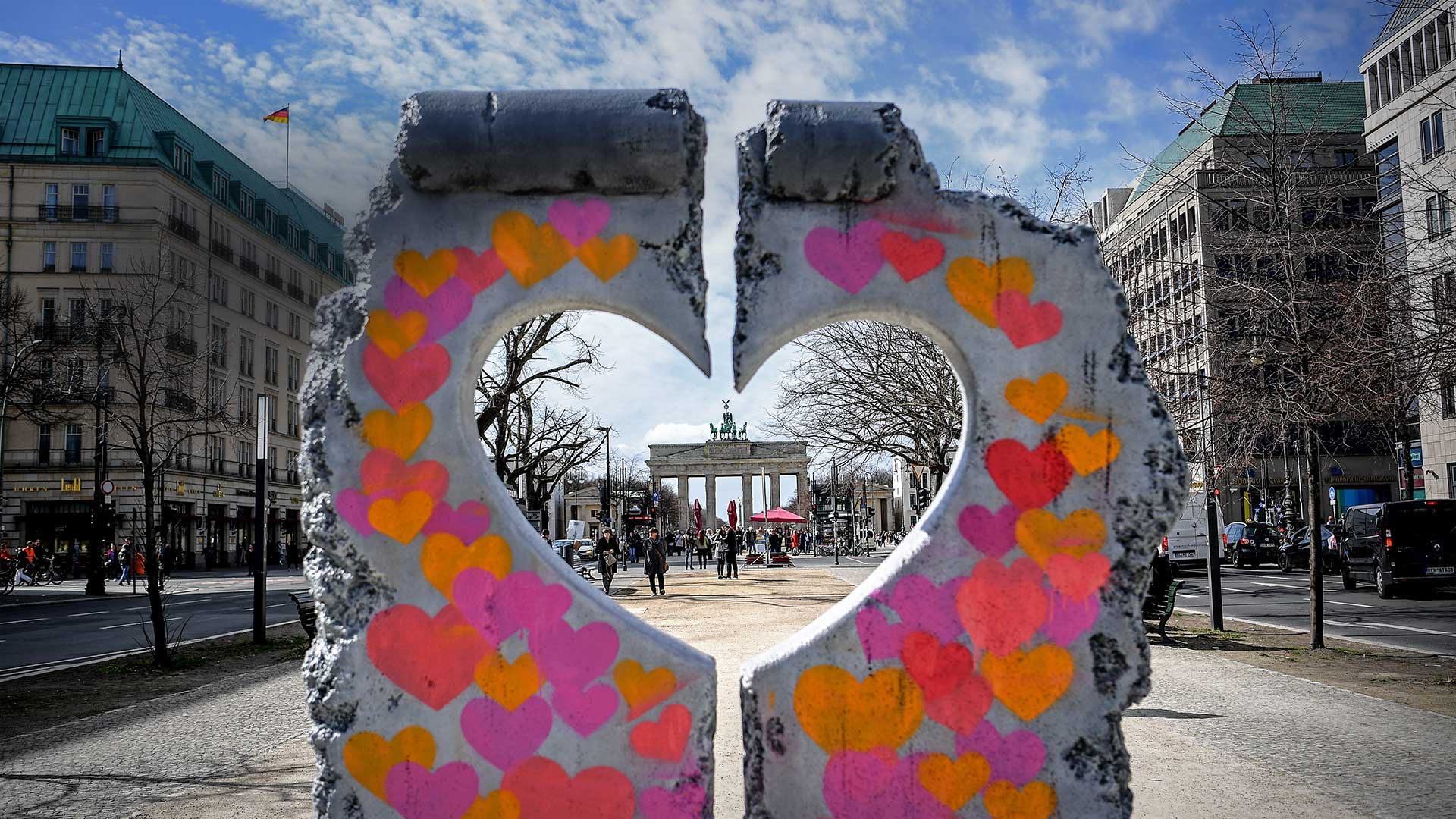
The Brandenburg Gate seen through a heart-shaped replica of the Berlin Wall (© Britta Pedersen/picture alliance via Getty Images)
We heart Berlin
We're gazing at the Brandenburg Gate—a symbol of peace and unity—through a heart-shaped replica of a remnant of the Berlin Wall, a symbol of the political division that once marked the German capital. Today marks the 30th anniversary of the fall of the concrete barrier that once obstructed this view.
Although it stood for 28 years, the fall of the wall was sparked on November 9, 1989, when an East German official mistakenly announced a newly relaxed travel policy during a broadcasted press conference. Within hours, thousands of hopeful East Berliners rushed the wall, overwhelming border guards who reluctantly opened the checkpoints. Soon Berliners from the East and West were on the wall, joyfully dancing together, breaking off pieces with their hands, hammers, and anything else they could use to crumble the cement. Shortly afterward, the wall finally came down and borders were opened.
Conditions that led to the wall began in the years following World War II, when Berlin was divided into Soviet-controlled East Berlin and the American, British, and French sectors known as West Berlin. Although East Berliners weren't allowed to emigrate, they managed to do so nonetheless, and by 1961, millions had left for life in the West, nearly bringing the East German economy to ruin. It was then, on August 13, 1961, that Berliners woke up to a barbed-wire fence cutting off West Berlin from East Germany, including East Berlin. Within days, East Germany fortified the barbed wire with concrete, eventually reinforcing it with an outer and inner wall, watchtowers, and floodlights, while also extending it 28 miles across the city and beyond. For nearly three decades the wall separated families and entire communities. When it finally came down in 1989, it would be another year before both cities would eventually be reunified under the new Federal Republic of Germany.
赖格莱兴的Wachsenburg城堡,德国图林根州 Wachsenburg Castle, Drei Gleichen, Thuringia, Germany (© Raimund Linke/Masterfile)
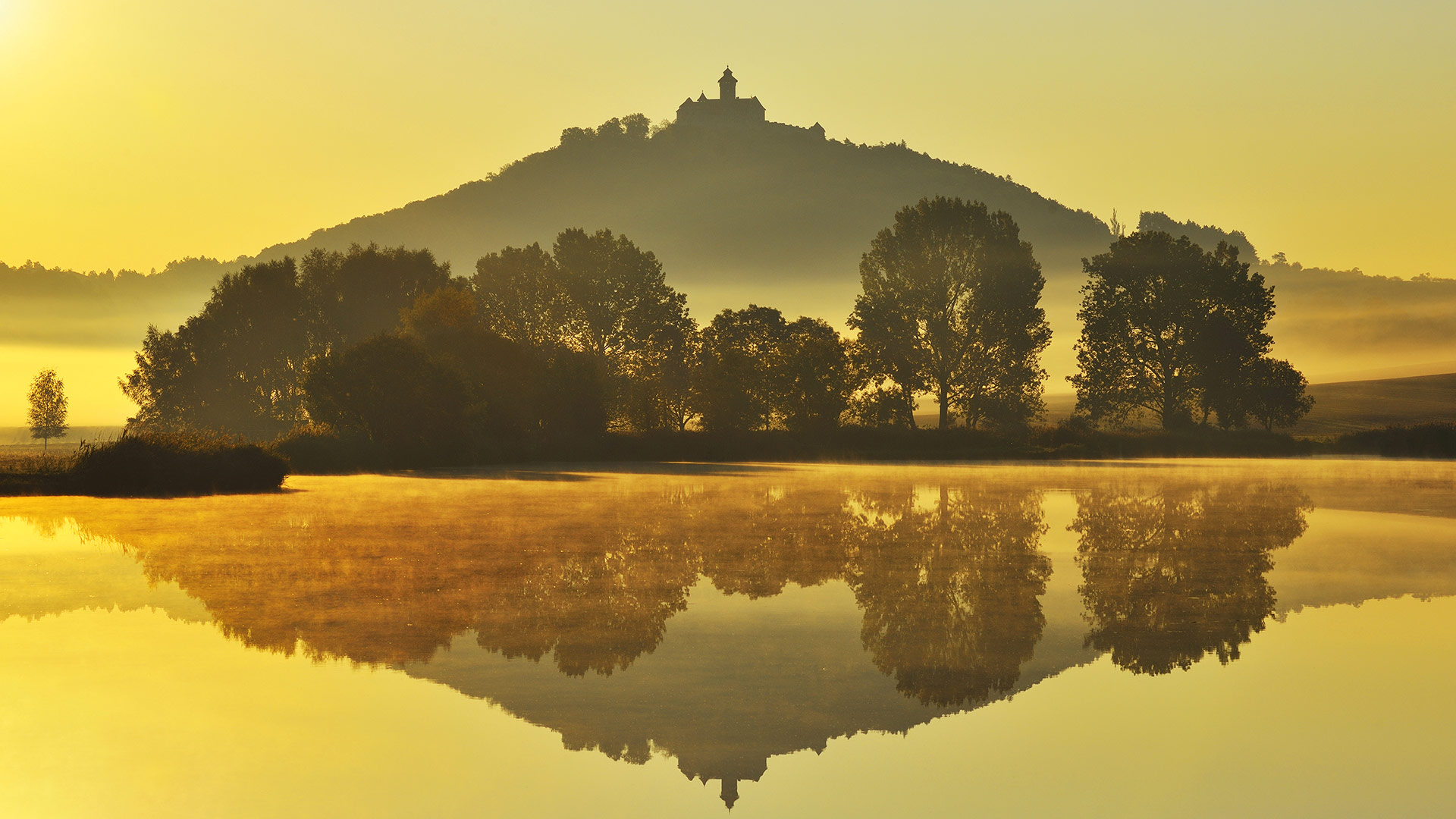
赖格莱兴的Wachsenburg城堡,德国图林根州 Wachsenburg Castle, Drei Gleichen, Thuringia, Germany (© Raimund Linke/Masterfile)
One of "Drei Gleichen“
The first leaves have already fallen, the temperatures in the morning are steadily decreasing and from today it is official: autumn has begun. With this idyllic shot of the Wachsenburg in Thuringia we would like to tune you to the golden season, which is at the same time the most beautiful for many people.
The Veste Wachsenburg looks back on a centuries-old and varied history. Its origins date back to the year 930, and in the following period the summit castle was destroyed several times and rebuilt or expanded. The Wachsenburg is part of a medieval castle ensemble called "Drei Gleichen".
拉姆绍的Wimbachklamm峡谷,德国巴伐利亚 Wimbachklamm, Ramsau, Bavaria, Germany (© Westend61 GmbH/Alamy)
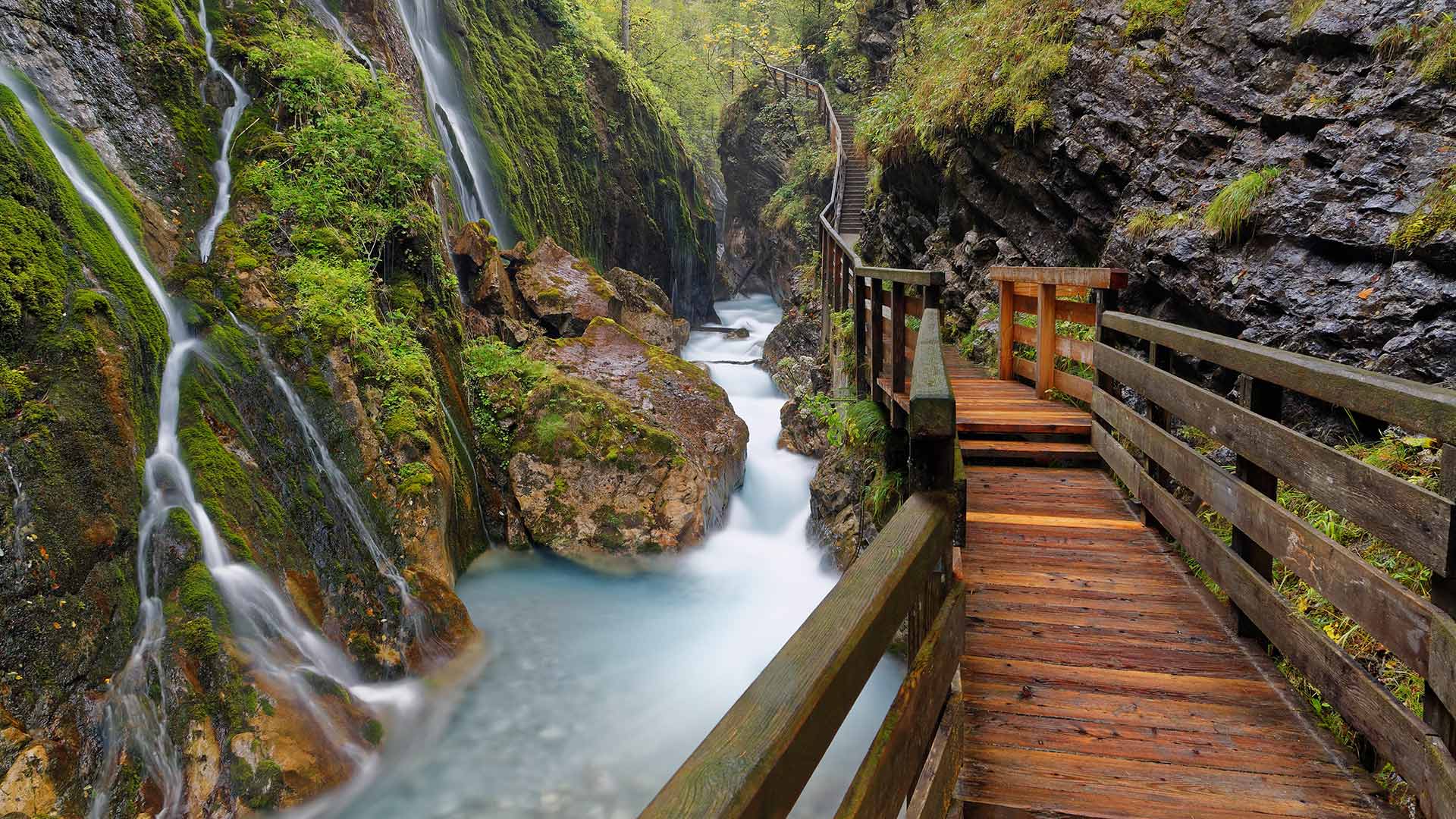
拉姆绍的Wimbachklamm峡谷,德国巴伐利亚 Wimbachklamm, Ramsau, Bavaria, Germany (© Westend61 GmbH/Alamy)
At the foot of the Watzmann
The gorge is a particularly narrow, deeply cut gorge with partly overhanging rock walls in the mountains. Today's homepage picture shows the Wimbachklamm near Ramsau. It is located in the heart of the Berchtesgaden National Park, nestled between the mountains Watzmann and Hochkalter. The Wimbach torrent has left a deep cut in the rock over the past 50 million years.The Wimbachklamm is open from May to October and can be passed over wooden bridges over a length of 200 meters. Only a few meters below the path the Wimbach roars, and the rock walls throw back the sounds of the water masses many times.
温特弗灵附近的费灵加湖,德国巴伐利亚 Lake Feringasee near Unterföhring, Munich, Bavaria, Germany (© Westend61/Getty Images)
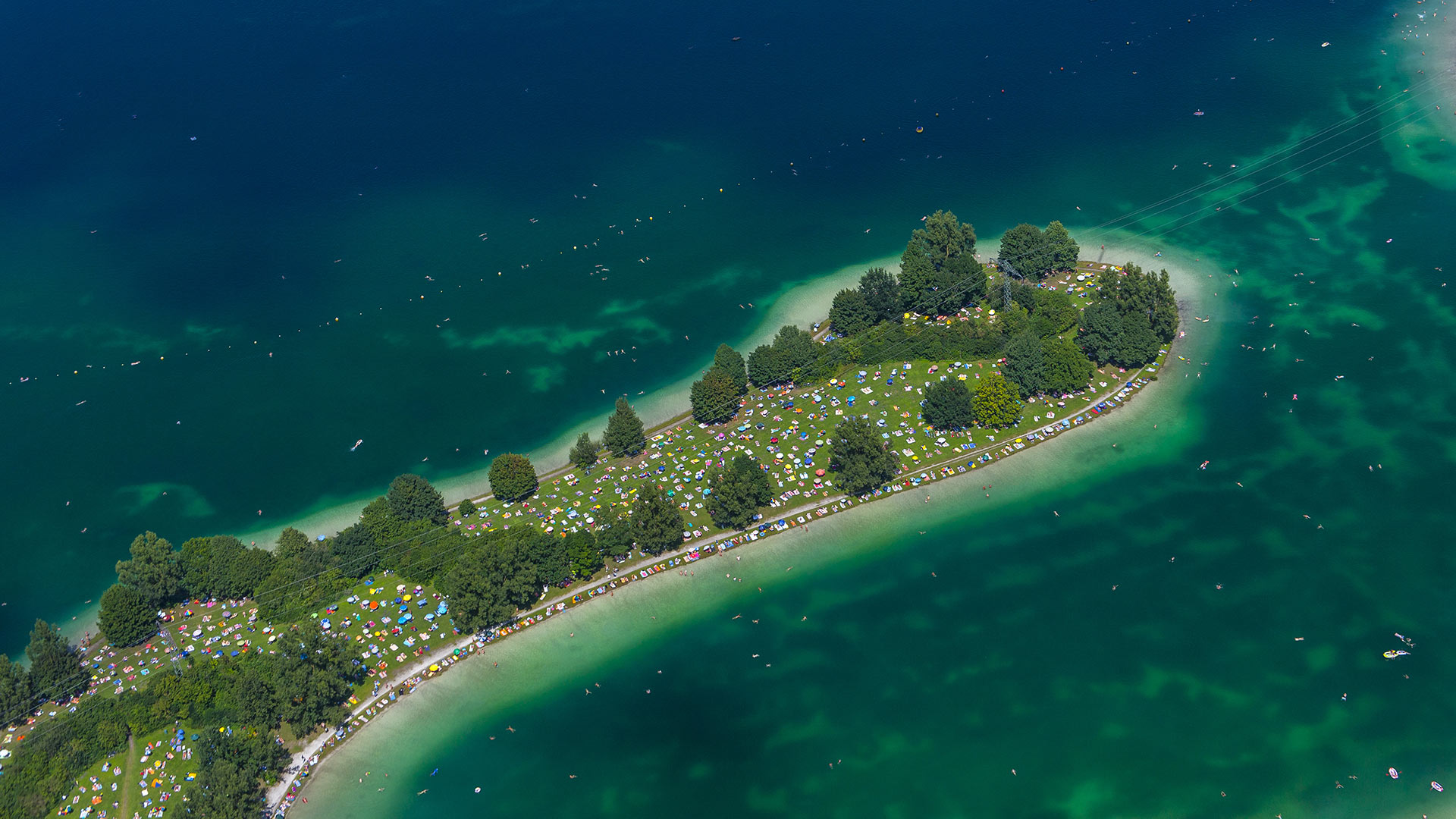
温特弗灵附近的费灵加湖,德国巴伐利亚 Lake Feringasee near Unterföhring, Munich, Bavaria, Germany (© Westend61/Getty Images)
Recreation area at the gates of Munich
How about a dip in the cool water? On the shores of the Feringasee near Unterföhring in the district of Munich, numerous bathers cavort in summer. The 32-acre lake is one of the most popular lakes in the Munich area. The Feringasee was built as part of the construction work for the A99 motorway and was used until 1976 as a quarry.
